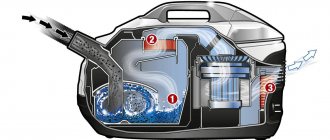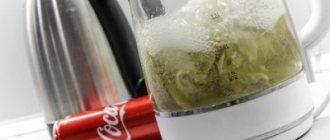During long-term operation of a vehicle, various contaminants, remains of decomposed fuel, scale and other debris accumulate in its fuel tank. In addition, the use of low-quality gasoline, which can be filled without the knowledge of the car owner, can lead to various problems. All these unpleasant factors can remind you of themselves at the most inopportune moment. To prevent such a situation from happening, it is recommended to clean the gas tank from time to time. There are many ways to clean a fuel tank. This material will discuss the most common of them.
How to quickly flush a gas tank?
The fastest method of flushing a fuel tank is to clean it without first dismantling it. Since full flushing is a rather labor-intensive process, motorists quite often resort to a simpler way to solve the problem. And although express cleaning of the gas tank is less effective, many motorists like this method. In order to clean the gas tank in this way, you must do the following:
- Unscrew the drain bolt on the bottom of the fuel tank;
- Drain the contents into a plastic container;
- Tighten the drain bolt and fill the tank with high-quality fuel;
- Rock the car from side to side to wash off all the dirt with gasoline;
- Drain the gasoline and repeat the procedure;
After draining the second portion of gasoline, close the drain plug and clean the gas tank with compressed air.
The benefits of such cleaning largely depend on the design of the gas tank. In most cases, the effect of flushing does not bring the desired result.
Cleaning from dirt
The presence of dirt in the gas tank can lead to clogging of the entire fuel system and, as a result, to vehicle failure.
To clean the tank:
- First of all, it is necessary to almost completely empty it of gasoline, leaving only 3 to 5 liters of fuel.
- Next, you should drive the car onto an overpass and unscrew the drain plug at the bottom of the gas tank, after placing a container under the hole to collect the liquid.
- Excess dirt will flow out along with the fuel.
- If necessary, you can also clean the bottom and walls manually through the hole using a lint-free rag or wire brush.
Flushing the gas tank after dismantling it
To better clean the fuel tank from all kinds of deposits, it must be removed. This is quite easy to do on almost any car; the main thing is to read the technical operating instructions for the car and clearly understand its design. There are several ways to flush the gas tank in this way:
- Using soda;
- Using electrolysis;
- Using phosphoric acid;
- Cleaning the gas tank with nuts.
Using soda as a cleaning agent is quite expensive, but very effective in practice. Expensive soda is heated to 40 degrees and poured into the gas tank to the brim. After keeping the soda in the gas tank for several hours, it is drained and thereby completes the flushing. The use of the electrolysis method is considered extremely effective. During this process, rust is removed from the gas tank and the metal layer is restored. This method is based on chemical electrolysis, which results in the formation of gases and water. The simplest method is considered to be using phosphoric acid. The substance is poured into the gas tank and wait 25 minutes. Then they drain and check the final result. If necessary, the procedure is repeated. The oldest method of cleaning a gas tank is the nut method. It is recommended to use it only if the entire surface of the gas tank is covered with a thick layer of rust.
The video will tell you how to flush the fuel tank yourself:
Cleaning the gas tank is usually not included among the standard service procedures. This issue remains on the conscience of motorists, and many of them needlessly turn a blind eye to it, especially considering the specifics of automobile life in our country. Let's try to figure out what contaminants need to be cleaned from the fuel tank, how best to do it, and whether it is possible to keep the tank clean without resorting to flushing.
Sources of pollution and combating them
The gas tank is the starting point in the movement of fuel through the vehicle's systems. However, in its depths, in addition to gasoline, you can sometimes find something that shouldn’t be there. Contamination of the tank can lead to impure fuel, and sometimes no fuel at all, entering the engine, and this can lead to serious damage. Signs of a dirty gas tank are:
- problems starting the engine after parking,
- uneven engine operation,
- frequently clogged injectors and fuel filters.
One of the main threats to a car’s fuel system in general and the gas tank in particular is water. It gets into the gas tank with diluted gasoline at dubious gas stations, but even if you fill your car with exclusively high-quality fuel, you are not insured against water in the tank.
It's no secret that the air contains moisture. If the tank is not completely filled with gasoline, then the remaining part is filled with air. When the temperature changes, condensation occurs and moisture from the air collects into water droplets. Do not forget that water is heavier than gasoline, so when it gets into the fuel, it settles to the bottom of the tank, from where it enters the gasoline pump.
Water can cause serious damage to a car, especially in winter when it freezes and interferes with the flow of gasoline to the engine. Both the fuel line and the injection system may be affected. In addition, the accumulation of water in the gas tank leads to corrosion of the inner surface of the gas tank.
Due to its greater density, water settles to the bottom of the vessel, and gasoline rises to the top
Removing water with alcohol
To remove water from gasoline, you need to add half a liter of pure alcohol to a whole tank of gasoline. Alcohol can be ethyl, methyl, isopropyl. It is important that it is pure and not diluted. When alcohol is dissolved in water, a mixture is formed that burns in the engine without problems. If your car has a diesel engine, instead of alcohol you need to add 500 ml of engine oil per 50 liters of diesel fuel. It is worth understanding that this is a one-time measure, and it is best to add alcohol or oil to the gas tank once before the onset of cold weather.
Draining and drying
If there is a drain hole at the bottom of the gas tank, the water can be drained from the fuel. After this, the gas tank can be rinsed from dirt and dried with a hair dryer. Thorough drying is extremely important.
Removing water
Moisture is one of the main threats to the fuel supply system in general and the gas tank in particular. It can get there when refueling at questionable gas stations, due to a leaky tank. Drops of water may condense on the walls as a result of incomplete filling when the ambient temperature changes. Due to its greater specific gravity, it settles to the very bottom and enters the fuel line and fuel pump.
It is also necessary to remove foreign liquid after preliminary flushing before cleaning the inside of the gas tank from rust, especially in cold weather when frozen particles prevent fuel from entering the engine.
You can get rid of water in the following ways:
- Use any alcohol in an amount of 0.5 liters per tank. When interacting with water, a flammable mixture is formed, which the engine absorbs without any problems. For a diesel engine, it can be replaced with machine oil in the proportion of half a liter of lubricant per 50 liters of diesel fuel. This measure should not be abused and should not be used during the onset of winter.
- Add special chemical additives, sold in large quantities by auto stores. Their choice must be taken with extreme care, as some of them can speed up the process of rust.
Preventing gas tank contamination
Cleaning the tank from water, dirt and rust with your own hands is quite simple. However, not every car enthusiast wants to do this. You can, of course, turn to professionals, but it costs money. It is much easier to prevent contamination of the tank and corrosion of its walls.
Epoxy against rust
Epoxy resins are used for anti-corrosion treatment of the inner surface of the gas tank. This coating is insoluble in water and gasoline, making it excellent for rust protection. To evenly apply the resin to all the walls of the tank, it must be poured through the neck, and then rotate the tank for a long time. When the epoxy has spread over all the walls of the tank, you can begin drying.
Anti-corrosion additives
Auto chemical stores sell anti-corrosion fuel additives. Among them there are very effective ones, but there are often cases when additives do not properly protect the gas tank from rust. Before choosing one of them, we recommend reading reviews on the Internet.
Smart car operation
The most reliable way to prevent contamination and corrosion of a gas tank is proper operation of the vehicle. A set of simple rules that, if followed, will save you from having to clean the gas tank:
- Monitor the quality of the fuel. Refuel only at approved gas stations.
- Monitor the amount of fuel. Try to keep the tank full. Be sure to fill it completely before parking for a long time. This will avoid the accumulation of water in the tank and its condensation on the walls.
- Try not to refuel in high humidity or foggy weather. If you still need to refuel, fill the tank full.
- With the onset of cold weather, add desiccant or alcohol to the tank in small quantities.
If a car's engine is its fiery heart, then the gas tank is its stomach, so it is very important for the health of the car to monitor its condition. Keep your tank clean and fill it with only quality gasoline, and your car will reward you with a smooth ride and long service life.
A fuel tank is a container in which fuel is stored. To ensure that gasoline storage is as safe as possible, modern tanks are made of durable metal alloys and treated with anti-corrosion substances. However, during operation, the cavity and surfaces of the gas tank are inevitably susceptible to rust - in this case, the car owner must take the necessary measures to extend the life of the tank.
What to do if your car exhaust pipe is frozen?
- Remove the tank and drain the fuel. If your car's gas tank has a drain hole, you do not have to remove the tank, but this may reduce the effectiveness of the procedure.
- Pour soap solution or cleaning agent through the neck. You can use water under high pressure.
- Shake the tank so that all its walls are washed. If the tank is not removed, rock the car.
- Drain the solution. And repeat this procedure several more times until you achieve cleanliness.
- Pour five liters of gasoline into the gas tank and shake it.
- Drain the gasoline.
- Dry the tank. For effective drying, use a technical hair dryer. There should not be a drop of water left in the tank.
The method of cleaning eggplants with millet is one of the most popular. Hard grits act as an abrasive.
Causes and signs of gas tank contamination
Many car enthusiasts don’t even think about the fact that the insides of the gas tank may need to be flushed or cleaned. Indeed, this is a completely closed container, where does dirt or dust come from?
However, the older the car, the more clogged the fuel tank becomes. And this can be blamed on several factors:
Tank service life - during operation, rust forms inside a metal container under the influence of temperatures.
Using low-quality fuel, which contains large amounts of dirt and sediment.
Failure to use cleaners to remove impurities from all elements of the fuel system.
The gas tank cap allows you to safely pour fuel through the filler pipe into the tank container
The main sign of a dirty fuel tank can be considered jerks in engine operation at low speeds. Water and impurities in gasoline prevent the engine from using all its intended power, so at low speeds the car begins to twitch.
When to clean the fuel tank
Cleaning and flushing the fuel tank is a prerequisite for its reliable operation. However, it is not recommended to wash it too often. The procedure can be performed once every two or three years, it all depends on the operating conditions and the quality of the fuel being poured.
If the car is constantly refueled at questionable gas stations on the highway, it is recommended to clean the tank capacity once a year. This will save the fuel filters from quickly depleting and eliminate the possibility of the lines becoming clogged with dirt and impurities.
For the entire fuel system (including the gas tank), the use of high-quality fuel is considered an important operating factor.
Actually, cleaning the gas tank is necessary to ensure high-quality operation of all elements of the fuel supply system. After all, small particles of sediment and impurities can enter the engine through the tank, which can lead to serious damage.
Cleaning methods
Different brands of cars have different fuel tanks. The easiest cleaning method will be on those models whose gas tanks have a drain hole. That is, draining fuel and washing can be done without dismantling the tank.
However, this option is not available to most car enthusiasts, so you will have to remove the tank from the car and wash it separately.
Preparatory stage
The procedure for flushing the gas tank is best done in the fresh air or in a well-ventilated area. Working with flammable and strong-smelling substances can affect a person’s well-being.
The fuel tank must be removed from the car body. As a rule, this procedure does not take much time. The main thing is to use up the entire volume of fuel available in the tank in advance, so that you do not have to drain the gasoline. However, in any case, several liters of fuel will remain in the system - both in the tank itself and in the fuel lines. Therefore, you will need to disconnect the connectors from the fuel pump, and also remove the hoses from the tank itself. You can place fuel drainage containers under all connection points so that fuel does not go into the ground or into half the garage.
When dismantling the gas tank, some amount of fuel will inevitably spill, so it is recommended to use both containers for drainage and rags
After the gas tank is removed from the car, you need to open all its holes and drain the remaining fuel.
Cleaning a motorcycle tank from internal rust
Maybe it will be useful for someone... In general, what can I tell you, friends. If you wash your motorcycle tank from rust, don’t repeat my mistakes. :))))) the tank is 25 years old, and apparently it stood empty and rusted for a long time.
Obviously, all previous actions (rust converter, abrasive, solvent) gave a very mediocre result. that is, the rust remains inside the tank. and not just a little, but quite a lot. Which gave me the idea to try a chemist I knew with a soldering iron. The chemist quickly gave up and said that there is such a cool thing -
How I found my ideal hair growth product
Hello dear! I want to share with you my solution to the sensitive problem of hair loss . The problems are very serious, at least for me. I would never have thought that this misfortune would touch me, especially at the age of 29 (read more...)
citric acid... which housewives add to all sorts of goodies. So, if you make a 3% solution of this very acid (hot solution), it will dissolve all the rust. It won’t peel off, won’t scrape off, but rather dissolve. Tank 24 liters. you need 720 grams of citric acid. but I waited and bought 620. The result was a slightly weaker acid. Considering that an 8 gram bag costs 7 rubles, then 620 grams came out fine. In chemical stores, a kilo costs 140 rubles, but for some reason they don’t sell it to private individuals.
We suggest you read: Washing and bleaching white socks in a washing machine or by hand
On the forums it is generally recommended that after all these procedures, fill the inside of the tank with epoxy. Think. but even without this, the result exceeded expectations. Thanks to chemists and citric acid!
Is it possible to flush the tank with gasoline?
Washing with gasoline (diesel fuel) is a mandatory step in all cleaning procedures. The fact is that after any, even the most thorough washing, a small amount of acid, acetone or washing powder inevitably remains in the gas tank. You cannot install such a tank on a car, because all this sediment will get into the fuel system, and from it into the engine.
Before pouring gasoline, it is recommended to dry the tank with a hairdryer - warm air will quickly dry all corners of the gas tank cavity. It will take a day or more for the container to dry on its own.
Therefore, after completing all cleaning procedures, it is necessary to carry out the last one - rinse the tank with fuel:
Reinstall the tank.
Connect all necessary lines.
Fill the gas tank to the brim with gasoline.
Start the engine and allow the fuel to circulate through the system.
Add gasoline as it leaves the highways.
Video: an alternative method of flushing gas tanks
It is very important to fill the tank full immediately, and it is not recommended to use fresh gasoline for this purpose. It is better to prepare cans of fuel in advance so that any sediment remains at the bottom.
Cleaning a motorcycle gas tank from rust: old-fashioned and modern methods
- Mix one glass of caustic soda in 30 liters of water.
- Fill the tank 90 percent with solution.
- Insert the conductor inside to the bottom without touching the walls. You can cut a wooden or plastic plug to fit the diameter of the neck and place this electrode in the middle.
- Connect the wire to the minus of the battery, and the cleaned area of the tank body to the plus.
- In 2-3 days, the internal space will be completely cleaned of traces of corrosion.
- After completing the process, you need to disconnect the battery and remove the electrode.
- Drain the liquid, rinse and dry the tank.
For metal to corrode, it needs contact with water and air. The tank is in constant contact with air, you only need to partially empty it, but it comes into contact with water in two cases:
Preventing rust in the gas tank
After flushing his gas tank, the car owner begins to think more seriously about how to protect this element of the fuel system from rust formation and dirt getting inside. After all, in car maintenance, it is prevention that plays a big role, and not the repair itself.
There are several fairly simple ways to maximize the life of your gas tank without resorting to frequent cleaning:
Fill with known high-quality fuel, which contains a minimum of sediments and impurities.
At gas stations, immediately fill the tank full so that there is no room left for the concentration of moist air in its cavity.
In winter, it is recommended to use dehydrators that will displace water from fuel. Dehydrators come in a variety of forms and are simply added to gasoline through the gas tank.
Periodically, both in summer and winter, use gasoline cleaners by pouring them into the cavity of the fuel tank. This measure has a good effect not only on rust prevention, but also on the entire condition of the car’s fuel system.
Another common way to protect a tank is to cover its surfaces with mastic. Mastic works well to protect metal from corrosion, but the paint itself is not cheap.
Coating with mastic will protect the gas tank from rust for a long time
You can replace the metal tank with a plastic one. In this case, the problem of rust can be avoided, but there will be a risk of other damage - cracks and deformations. In addition, plastic gas tanks, even if there are no defects, last much less than metal ones.
Thus, the condition of the fuel tank depends entirely on the care of the car owner. If you refuel at proven gas stations and periodically flush the tank, then in the future you will not have to buy a new product.











